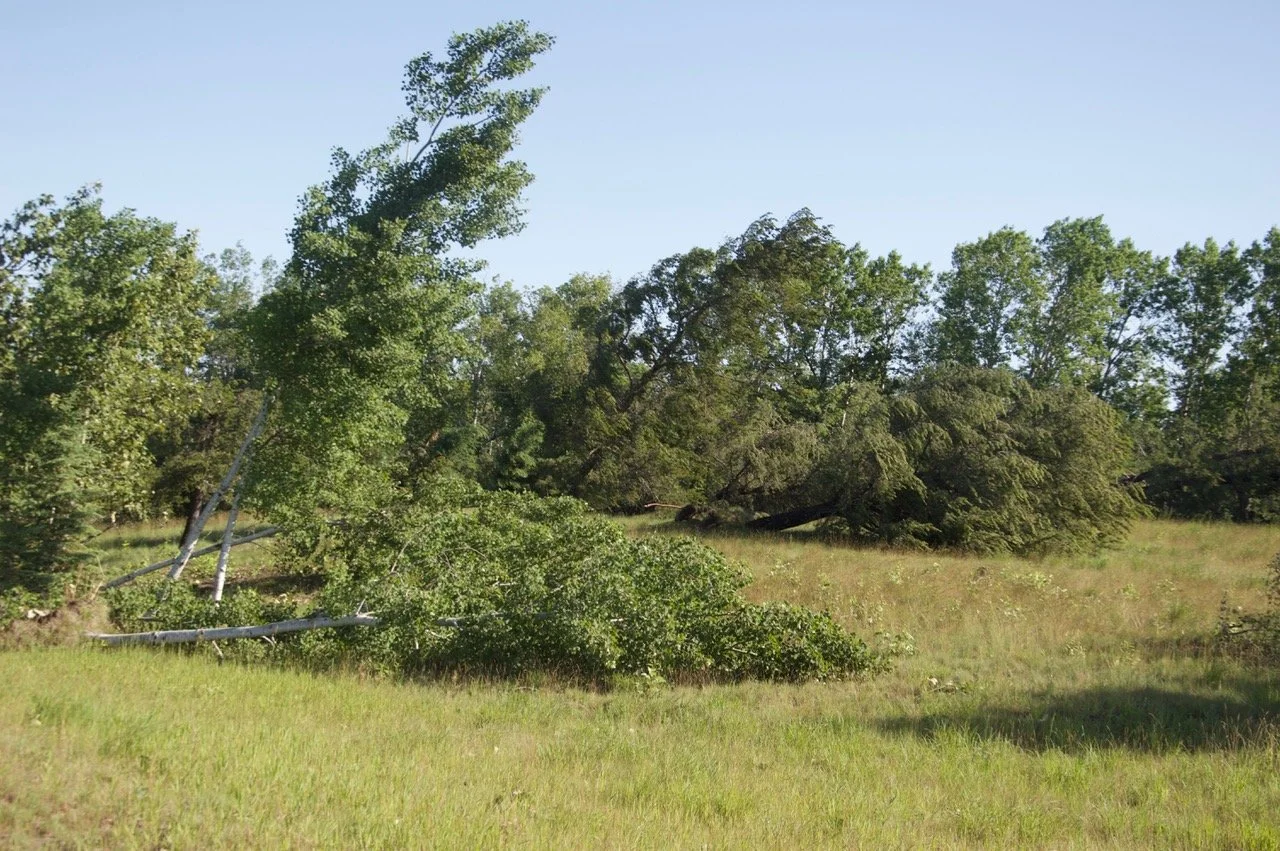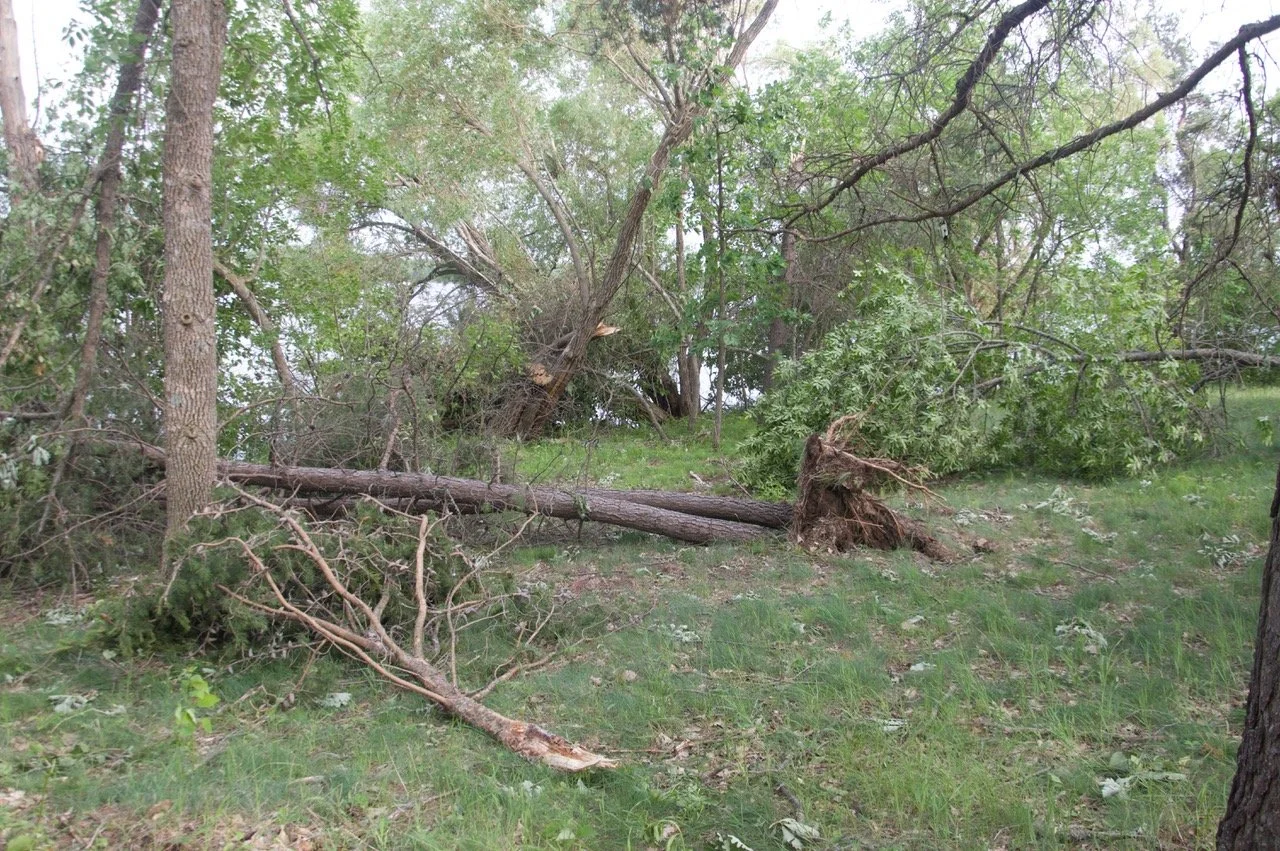By Kathleen Preece, Executive Director at Minnesota Forest Resources Partnership and MNWWN Executive Committee Member
The headlines in the Bemidji Pioneer newspaper on June 21 read: “It’s hard to comprehend . . .” and “Recover.” “Rebuild.”
The northern Beltrami County community of Bemidji was victim of a derecho during the early morning hours of Saturday, June 21.
“Derecho.” The word sounds like it should be describing a summer drink; perhaps crushed ice blended with lime and pineapple and blended with coconut milk for taste; sipped while overlooking your wooded landscape?
Regrettably, a derecho is not a summer refreshment. A derecho is officially defined as a ‘line of intense, widespread, and fast-moving windstorms, sometimes including thunderstorms that move across a great distance and are characterized by damaging winds.’
Miraculously, no one was killed in Bemidji from the force of the storm itself, but damage to the area was extensive. The 100-plus, hurricane-force gales ripped through the core of the town and its surrounding woodlands. Thousands of trees were downed, as were many electric poles. Countless homes and businesses lost their roofs and suffered major damage. The entire region went dark – some businesses and homes remained without utilities for more than a week.
A state of emergency was declared. College campuses were closed, as were grocery stores, service stations, area parks, and most public buildings and services.
The recovery has begun for home and woodland owners; that ‘recovery’ involves both physical and emotional healing. There are web sites and official manuals to guide woodland owners into the on-the-ground phases of recovery. The University of Minnesota (U of M) and Department of Natural Resources (MNDNR) have informative web sites that provide guidance and resources to managing storm-damaged trees, including how to assess damage, remove trees and find insurance assistance. One helpful publication is “After the storm: A woodland owner’s guide to management wind-damaged forests” https://extension.umn.edu/natural-resources-news/after-storm-woodland-owners-guide-managing-wind-damaged-forests, prepared by the U of M Extension. The MNDNR’s storm damage guide can be found at https://www.dnr.state.mn.us/treecare/maintenance/stormdamage-prevention.html.
These guides provide the practical follow-up to downed trees and structures: how to assess damage, how to safely remove downed trees, when to burn debris and where to put it.
But there is more than the physical cleanup of downed structures and blocked roads – there is an emotional ‘clean-up’ to deal with. U of M Extension Forester and Minnesota Women’s Woodland Network Board (MNWWN) member, Angie Gupta, suggests that those of us who have undergone such a storm deal with “eco-anxiety:” we have concerns about the cleanup, and about what the future holds for what was once ‘green and growing’ on our personal and public landscapes. Angie has another name for this uncomfortable feeling of loss evoked by such a change. It’s called “Solastalgia.” It is defined as ‘the stress caused by lived environmental change. Solastalgia can lead to feelings of powerlessness and anger.’ This emotion is common when a landscape is significantly altered.
It's the way one feels when seeing the downed big-toothed aspen (planted when just a ‘twig) that marked the transition of seasons through its budding and leafing out and falling leaves, which has now left a hole in the skyline. And it’s the spruce, planted when a nephew was born (could it be 24 years ago?), that no longer gives testimony to that celebratory day nearly a quarter century past; it’s the fractured basswood, now a tangled mess at the edge of the field that once hosted hours of tree house play; and it’s the now-twisted willow that once held the hammock where someone lay on a summer day and where at least 100 books were read.
Angie says it’s okay to mourn the loss of trees, space, and landscapes you remember. The mourning is just ‘different.’ As she says, the traditional rituals - ‘bringing a hotdish’ to a grieving person doesn’t quite work in these situations.
Create new rituals, she advises. Take a tree cookie from one of those downed trees; cut up a trunk and make a picnic ring; focus on getting one small piece of the land cleaned up and think about what that space can grow in the future. Create rituals that honor the memories of your trees and woodlands.
MNWWN board member, as well as southeastern Minnesota private landowner/Tree Farmer Janet Erdman wraps her arms and emotions by summarizing her own experience:
“We went through our own derecho 3-1/2 years ago and it was tough. Today, as replacement yard trees are growing, trails and roads are cleared, and the forest is regenerating, I wish I could have seen the future. It’s a different landscape, but a good one. To participate in the renewal can be very personal and healing.”

